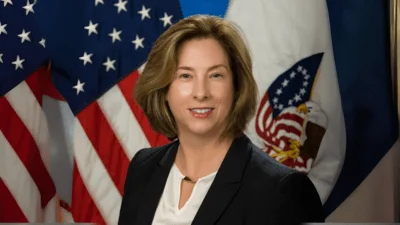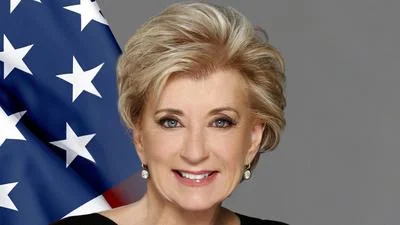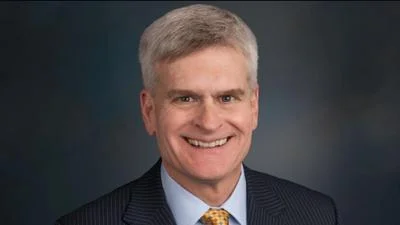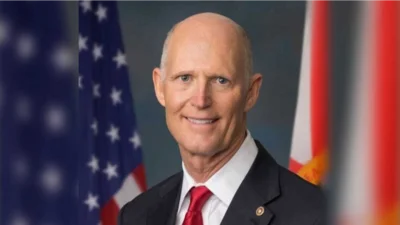Congressman Pete Visclosky (IN-01), Chair of the Defense Appropriations Subcommittee, delivered the following remarks at the Appropriations Committee's markup of the fiscal year 2020 Defense bill:
Thank you, Madam Chair.
I would like to begin by expressing appreciation to Ranking Member Calvert. It has been a pleasure to be able to work closely with him. He has made it easy to continue the collegiality, transparency, and bipartisanship that is the hallmark of the Defense Subcommittee.
I also would like to express my gratitude to Chairwoman Lowey, Ranking Member Granger, and the other Members of the Subcommittee for their efforts. The Subcommittee welcomed five new Members this Congress - Reps. Kilmer, Aguilar, Bustos, Crist, and Kilpatrick - and all have made valuable contributions throughout this cycle.
And thank you to the Subcommittee staff, particularly the Majority Clerk, Becky Leggieri, and her Minority Counterpart, Leslie Albright, and the associate staff, for their hard work. We would not be here today, but for their outstanding effort.
The bill would provide $690.2 billion for the Department of Defense, which is $15.8 billion above the fiscal year 2019 enacted level and $8 billion below the request. The base funding recommendation is $622.1 billion, which is $15.6 billion above the fiscal year 2019 enacted level and $88.2 billion above the request. The overseas contingency operations recommendation is $68.1 billion, which is $165 million above the fiscal year 2019 enacted level and $96.2 billion below the request.
This bill supports the Department of Defense’s effort to align its resources with the National Defense Strategy. This strategy redirects the Department’s primary focus toward the challenges posed by great powers such as China and Russia, and their efforts to counter and challenge the technological and operational superiority long enjoyed by the United States military. This technological overmatch can no longer be assumed, and this bill provides funding to develop and field new weapon systems and capabilities to address these new challenges. To support this forward-looking posture, the bill makes major investments in procurement and research and development. Those investments are detailed in a summary document that was provided at each Members’ desk, so I will not highlight those in my remarks.
But most importantly, the Subcommittee has been focused on the well-being and morale of those in uniform, their families, DoD civilians, and defense communities.
* The bill provides a 3.1 percent pay raise for our women and men in uniform. This is the largest increase in basic pay since 2010 and maintains the Committee’s commitment to ensuring our all-volunteer force is compensated for their sacrifices.
* The report expresses support for a 3.1 percent pay increase for DoD civilian employees. We rely on DoD civilians to work side-by-side with military personnel to provide medical care for our troops, to perform vital logistics, maintenance, acquisition, and other essential services. The Administration’s refusal to request an increase in pay for federal employees devalues the important work done by these public servants and I hope this Committee will ultimately rectify that in this year’s appropriations measures.
* I believe that access to affordable and quality childcare is vital to retention in the all-volunteer force, particularly for mid-career enlisted and officers. Thousands of military children, including over 9,000 whose parents serve in the Navy, are waitlisted for Childcare Development Centers. I am disappointed that with such demonstrated need the military services’ requests for childcare facilities were relatively unchanged from prior years. To get at this backlog, the bill provides an additional $70.7 million for upgrades to military childcare facilities, which is complementary to an effort included in the FY20 Military Construction Appropriation measure to accelerate the construction of new Childcare Development Centers.
* The pervasiveness of sexual assault amongst service members is deeply abhorrent and it is disheartening that the most recent report on the subject shows that sexual assaults across the U.S. military increased by a rate of nearly 38 percent in 2018, with over two-thirds of assaults going unreported. The bill provides $297.2 million for Sexual Assault Prevention and Response programs at the Service level, $13.5 million above enacted and equal to the request. It also provides an additional $35 million for for Special Victims Counsel for victims of sexual assault and $3 million for Sexual Trauma Treatment Pilot Program for treatment of members of the Armed Forces for PTSD Related to Military Sexual Trauma.
* The bill provides $1.26 billion for environmental restoration activities, which is $188 million above the request. This includes $13 million for a nationwide health study on the implications of PFOS/PFOA at former and current domestic military installations. Further, the report directs the Department to achieve a drinking water cleanup standard equal to or better than the EPA health advisory level for federally controlled sites and surrounding communities whose water sources were contaminated because of Department activities.
I believe these efforts and several others within the bill will have an immediate positive impact on people’s quality of life.
There are also several actions taken in the bill that I believe are important to highlight as an Appropriator and a Member of the Legislative Branch.
In FY19 this Committee expressed significant displeasure with the inadequate budget justification by the Department of Defense. There have been improvements in certain areas, but a number of major proposals put forth by the DoD in the FY20 budget were incredibly lacking in detail. For example, there was a $72 million request to establish a Space Force, but the Department was unable to answer basic questions about the structure of the force, nor could they detail long-term costs. Because of that uncertainty, the Committee only provides $15 million for Space Force.
Another example would be the proposed reorganization of the Military Health System. This reorganization was mandated in the 2017 Defense Authorization Act. In its FY20 request the Department requested a significant amount of money for the reorganization and proposed a major reduction in healthcare billets. Yet it could not answer basic questions about how the reorganization would affect service members and beneficiaries. Of particular concern to the Committee were impacts to pediatrics, maternity care, and mental health. The legislation halts the reorganization until those questions can be answered.
Further, this legislation takes several steps to return to balance the relationship between the Executive and Legislative Branch. We all know the catalyst for this action, but let’s set that aside for the moment. The Constitution gives the Congress the power of the purse. And if this Committee appropriates funds for a designated and authorized purpose, I doubt there is anyone in this room who believes it is lawful for those funds to be used in contravention of that direction. Unfortunately, the historic and unprecedented comity that has existed between the Committee and the Department of Defense no longer exists.
As a result, the bill reduces the amount of money the Department can move between accounts by 75 percent from the FY 2019 levels. This reduction leaves the Department with $1.5 billion in general transfer authority, which allows for the meeting of urgent and emergent military requirements. The legislation also increases the notification requirements and requires additional detail be provided to Congress in order for the Department to reprogram funding or start a new program. These are not actions that were taken lightly, but are absolutely necessary in order to allow Congress to carry out its Article I responsibilities.
Finally, I feel compelled to spend a moment discussing the issue that has been an albatross around this Committee’s neck since Aug. 2, 2011, the Budget Control Act (BCA). In past years, I have bemoaned the sheer lunacy of the BCA and how it has made this Committee’s work that much more difficult. Unfortunately, that dynamic remains until Congress and the President come together and find a solution to the BCA caps for FY20 and FY21. I understand that this is not a simple matter. However, I fail to see the benefit from delaying the conversation any longer.
In closing, I would like to again reiterate my thanks to Members and staff that logged the long hard hours required to put this product together. As we move along in the FY 2020 process, I look forward to continuing to work with the members of the Committee to complete our work.
Thank you again, Madam Chairwoman for the time.
Source: U.S. Department of HCA








